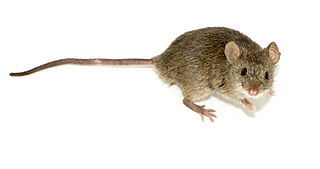
A mouse is a small rodent. Characteristically, mice are known to have a pointed snout, small rounded ears, a body-length scaly tail, and a high breeding rate. The best known mouse species is the common house mouse. Mice are also popular as pets. In some places, certain kinds of field mice are locally common. They are known to invade homes for food and shelter.
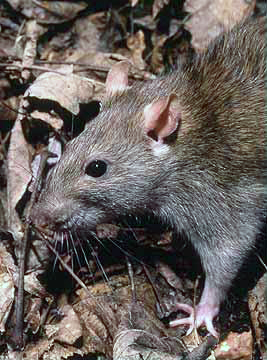
Rats are various medium-sized, long-tailed rodents. Species of rats are found throughout the order Rodentia, but stereotypical rats are found in the genus Rattus. Other rat genera include Neotoma, Bandicota and Dipodomys.
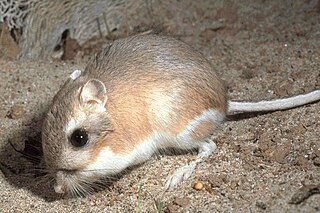
Kangaroo rats, small mostly nocturnal rodents of genus Dipodomys, are native to arid areas of western North America. The common name derives from their bipedal form. They hop in a manner similar to the much larger kangaroo, but developed this mode of locomotion independently, like several other clades of rodents.

A mousetrap is a specialized type of animal trap designed primarily to catch and, usually, kill mice. Mousetraps are usually set in an indoor location where there is a suspected infestation of rodents. Larger traps are designed to catch other species of animals, such as rats, squirrels, other small rodents, or other animals.

The house mouse is a small mammal of the order Rodentia, characteristically having a pointed snout, large rounded ears, and a long and almost hairless tail. It is one of the most abundant species of the genus Mus. Although a wild animal, the house mouse has benefited significantly from associating with human habitation to the point that truly wild populations are significantly less common than the semi-tame populations near human activity.

The laboratory mouse or lab mouse is a small mammal of the order Rodentia which is bred and used for scientific research or feeders for certain pets. Laboratory mice are usually of the species Mus musculus. They are the most commonly used mammalian research model and are used for research in genetics, physiology, psychology, medicine and other scientific disciplines. Mice belong to the Euarchontoglires clade, which includes humans. This close relationship, the associated high homology with humans, their ease of maintenance and handling, and their high reproduction rate, make mice particularly suitable models for human-oriented research. The laboratory mouse genome has been sequenced and many mouse genes have human homologues. Lab mice sold at pet stores for snake food can also be kept as pets.

The Muridae, or murids, are the largest family of rodents and of mammals, containing approximately 1,383 species, including many species of mice, rats, and gerbils found naturally throughout Eurasia, Africa, and Australia.

Heteromyidae is a family of rodents consisting of kangaroo rats, kangaroo mice, pocket mice and spiny pocket mice. Most heteromyids live in complex burrows within the deserts and grasslands of western North America, though species within the genus Heteromys are also found in forests and their range extends down as far as northern South America. They feed mostly on seeds and other plant parts, which they carry in their fur-lined cheek pouches to their burrows.

The Old World rats and mice, part of the subfamily Murinae in the family Muridae, comprise at least 519 species. Members of this subfamily are called murines. In terms of species richness, this subfamily is larger than all mammal families except the Cricetidae and Muridae, and is larger than all mammal orders except the bats and the remainder of the rodents.
Lymphocytic choriomeningitis (LCM) is a rodent-borne viral infectious disease that presents as aseptic meningitis, encephalitis or meningoencephalitis. Its causative agent is lymphocytic choriomeningitis mammarenavirus (LCMV), a member of the family Arenaviridae. The name was coined by Charles Armstrong in 1934.
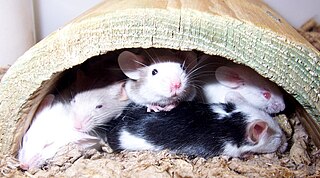
The most common rodents kept as household pets are hamsters, gerbils, common degus, fancy mice, fancy rats, common chinchillas, and guinea pigs (cavies).

A kangaroo mouse is either one of the two species of jumping mouse native to the deserts of the southwestern United States, predominantly found in the state of Nevada. The name "kangaroo mouse" refers to the species' extraordinary jumping ability, as well as its habit of bipedal locomotion. The two species are:

A fancy mouse is a domesticated form of the house mouse, one of many species of mice, usually kept as a type of pocket pet. Fancy mice have also been specially bred for exhibiting, with shows being held internationally. A pet mouse is inexpensive compared to larger pets, and even many other pet rodents, but mice are comparatively short-lived: typically only 2 to 3 years.

A hamster wheel or running wheel is an exercise device used primarily by hamsters and other rodents, but also by other cursorial animals when given the opportunity. Most of these devices consist of a runged or ridged wheel held on a stand by a single or pair of stub axles. Hamster wheels allow rodents to run even when their space is confined. The earliest dated use of the term "hamster wheel", located by the Oxford English Dictionary, is in a 1949 newspaper advertisement.
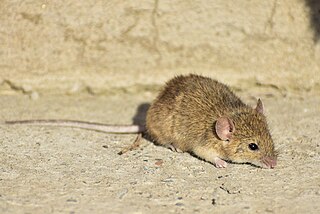
Fear of mice and rats is one of the most common specific phobias. It is sometimes referred to as musophobia or murophobia, or as suriphobia, from French souris, "mouse".
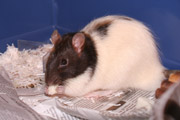
The American Fancy Rat and Mouse Association (AFRMA), formed in 1983, is a California-based club of rodent enthusiasts that organizes shows, establishes breed standards, and promotes both the fancy rat and the fancy mouse as appealing pets. Their scope and intent is similar to the American Kennel Club in its association with dogs.
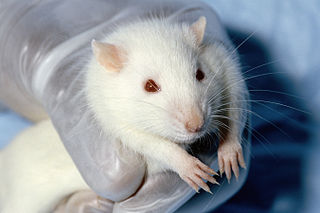
Rodents are commonly used in animal testing, particularly mice and rats, but also guinea pigs, hamsters, gerbils and others. Mice are the most commonly used vertebrate species, due to their availability, size, low cost, ease of handling, and fast reproduction rate.
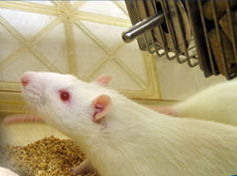
A knockout rat is a genetically engineered rat with a single gene turned off through a targeted mutation used for academic and pharmaceutical research. Knockout rats can mimic human diseases and are important tools for studying gene function and for drug discovery and development. The production of knockout rats was not economically or technically feasible until 2008.

Rodents are mammals of the order Rodentia, which are characterized by a single pair of continuously growing incisors in each of the upper and lower jaws. About 40% of all mammal species are rodents. They are native to all major land masses except for New Zealand, Antarctica, and several oceanic islands, though they have subsequently been introduced to most of these land masses by human activity.
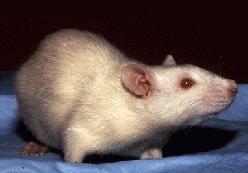
Research into the mental disorder of schizophrenia, involves multiple animal models as a tool, including in the preclinical stage of drug development.